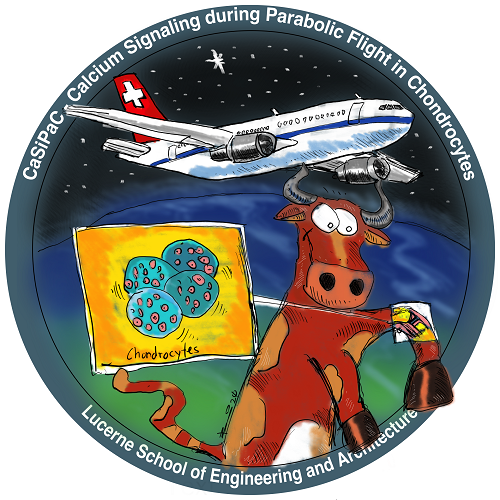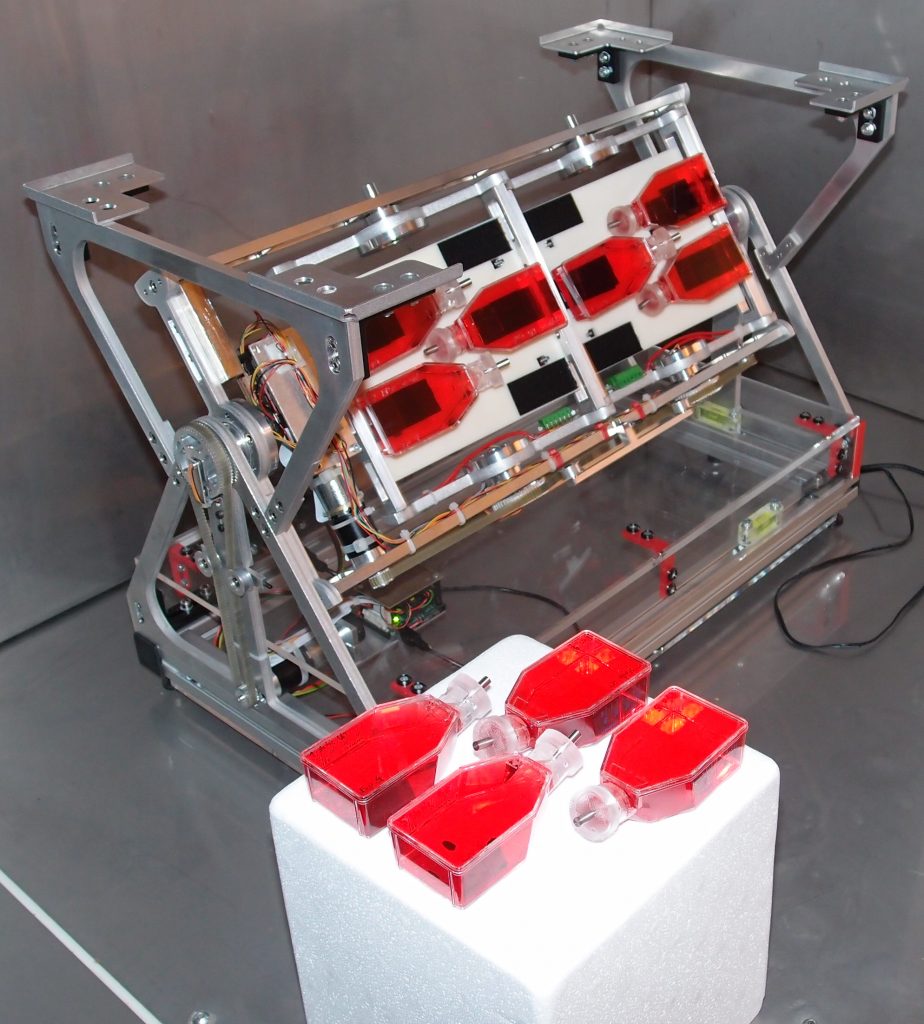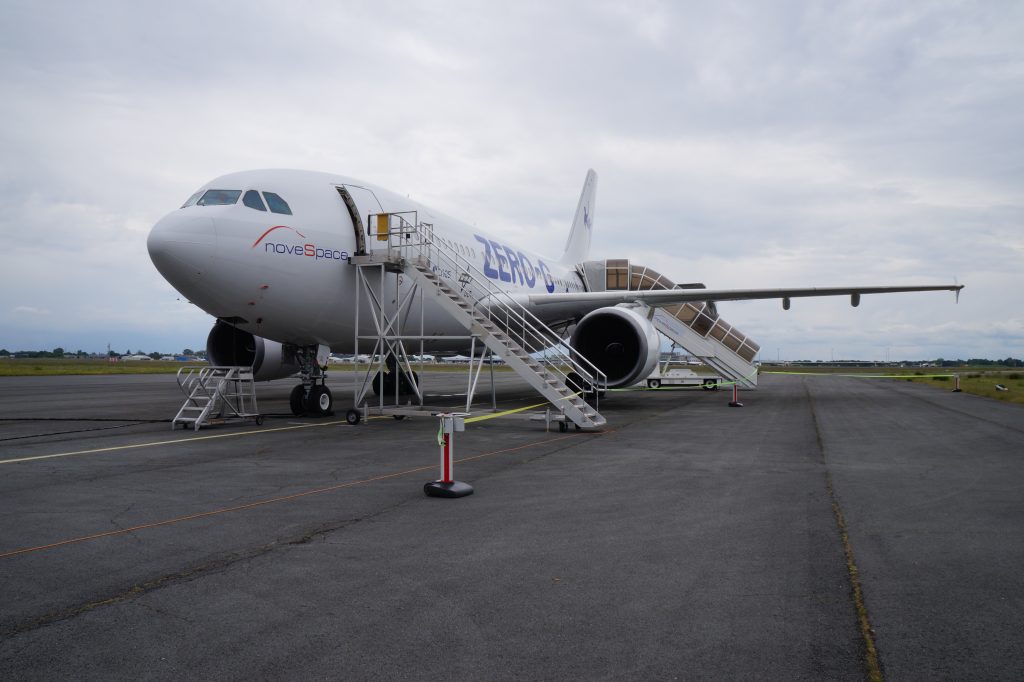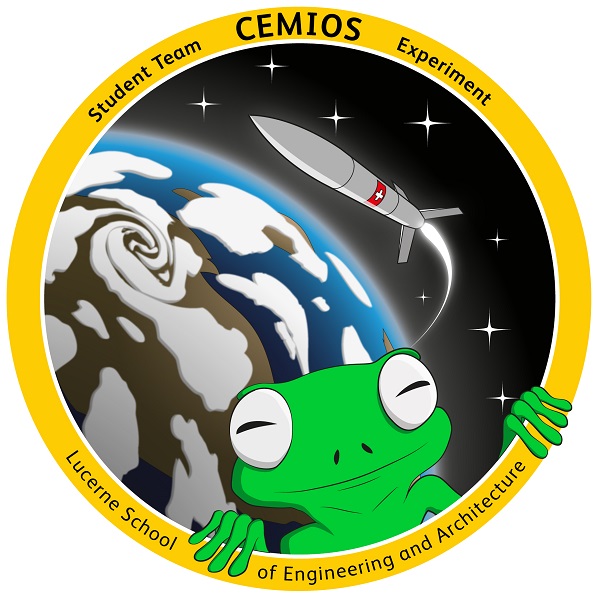Author Archives: Simon
Calcium Signaling during Parabolic Flight in Chondrocytes

Articular cartilage separates the bones in articulating joints (e.g. hips, knees, shoulder, etc.) and allows for almost effortless movement. The predominant cell types found in articular cartilage are termed chondrocytes and are responsible for building, maintaining and degrading the tissue. The pathological breakdown of articular cartilage results in osteoarthritis, which is a wide-spread disease in western civilizations and has a major socio-economic impact. An active lifestyle and adequate mechanical stimulation are essential for cellular health and tissue maintenance. However, to date the molecular mechanisms on how chondrocytes (cartilage cells) integrate mechanical forces into a cellular response (mechanotransduction) are not fully understood. Our aim is, therefore, to better understand the effects of mechanotransduction on cartilage degeneration and regeneration.
Continue readingCartilage Cells on a Parabolic Flight. Is the Cytoskeleton Stable?

Adequate mechanical stimulation is essential for cellular health and tissue maintenance, including articular cartilage, which lines the articulating bones in joints. Chondrocytes, which are the sole cells found in articular cartilage, are responsible for matrix synthesis, maintenance and degradation. It is generally believed that chondrocytes require mechanical stimuli through daily physical activity for adequate cartilage homeostasis. However, to date, the molecular mechanisms of cellular force sensing (mechanotransduction) are not fully understood. Among other mechanisms, the cytoskeleton is thought to play a key role. Despite that gravity is a very small force at the cellular level, cytoskeletal adaptations have been observed under altered gravity conditions of a parabolic flight in multiple cell types. In this study, we developed a novel hardware which allowed to chemically fix primary bovine chondrocytes at 7 time points over the course of a 31-parabola flight.
Continue readingCulturing Articular Chondrocyte on the Random Positioning Machine

Due to the limited self-repair capacity of articular cartilage, the surgical restoration of defective cartilage remains a major clinical challenge. The cell-based approach, which is known as autologous chondrocyte transplantation (ACT), has limited success, presumably because the chondrocytes acquire a fibroblast-like phenotype in monolayer culture. This unwanted dedifferentiation process is typically addressed by using three-dimensional scaffolds, pellet culture, and/or the application of exogenous factors. Alternative mechanical unloading approaches are suggested to be beneficial in preserving the chondrocyte phenotype.We examined if the random positioning machine (RPM) could be used to expand chondrocytes in vitro such that they maintain their phenotype.
Continue readingElectrophysiological Recordings on Frog Eggs during a Parabolic Flight

Mechanical unloading by microgravity (or weightlessness) conditions triggers profound adaptation processes at the cellular and organ levels. Among other mechanisms, mechanosensitive ion channels are thought to play a key role in allowing cells to transduce mechanical forces. Previous experiments performed under microgravity have shown that gravity affects the gating properties of ion channels. We developed a new method to record a calcium dependent current in native eggs from the African clawed frog (Xenopus laevis oocytes) under microgravity conditions during a parabolic flight.
Continue readingCEMIOS: Frog eggs on a short trip into space

It is not fully understood how cells detect external mechanical forces, but mechanosensitive ion channels play important roles in detecting and translating physical forces into biological responses (mechanotransduction). With the “OoClamp” device, we developed a tool to study electrophysiological processes, including the gating properties of ion channels under various gravity conditions. The “OoClamp” device uses an adapted patch clamp technique and is operational during parabolic flight and centrifugation up to 20 g. In the framework of the REXUS/BEXUS program, we have further developed the “OoClamp” device with the goal of conducting electrophysiological experiments aboard a flying sounding rocket.
Continue reading